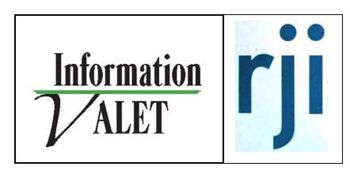Blueprint-partners-stites-sussman
Contents
The Information Valet Project:
December 3-5, 2008
Reynolds Journalism Institute
Columbia, Missouri
HOME PAGE . . . PARTNER REPORTS INDEX . . . .
11/29/08: Conversation between Tom Stites and Emily Sussman, IVE conference participants
Tom and I talked for roughly 40 minutes this afternoon about the perspectives and projects we'd each be bringing to the IVE conference this week.
Our conversation mainly focused on the current news climate and its alienation from content that actually has some bearing on readers' lives—i.e., "local" news. Tom pointed out that local news should be further distinguished between "metro" local and "hyper" local," because readers "don't live in metro terms... they have local lives." Because the industry has languished in this "unnatural construction" of metro news masquerading as local news, Tom added, it's not surprising that metro newspapers are floundering even as the demand for hyper-local news seems to be growing. Emily, who worked as a local (print) reporter in small-town Cape Cod, lamented that as community newspapers were being bought out and transferred to umbrella-type online news networks like Gatehouse Media's "Wicked Local" platform, the breadth of hyper-local news was increasingly being passed over and/or homogenized. The conversation then veered into the topic of "distraction news," that is, overblown tabloid stories that strive for emotional response and dramatic narrative rather than actual relevance or context. Tom recommended that Emily read "Tabloids, Talk Radio and TV News," a 1995 essay by Ellen Hume. We also briefly discussed the concept of interactivity on news websites, and whether reader "comments" forums have the potential to affect the quality and/or direction of those news sites.
As a journalist with a long and esteemed career editing and reporting national print news, Tom's current principal endeavor is the Banyan Project, in which he hopes to provide a digital media platform that provides (but is not limited to) service journalism for segments of the population that have traditionally been marginalized by the mainstream press; he gave Emily some interesting background information about the project and how it's evolved over the past six years. Emily is a master's student at the University of Missouri who intended to concentrate on long-form magazine writing, found herself experimenting with online magazine models instead, and ultimately ended up with a lot of questions about how online journalism can engage people, both as consumers and as participants. They both have high hopes for exchanging ideas at the upcoming conference.
